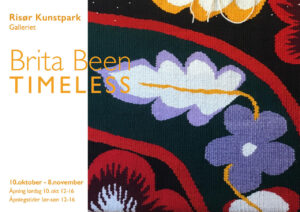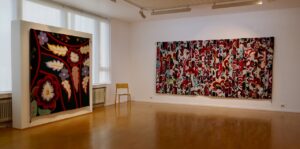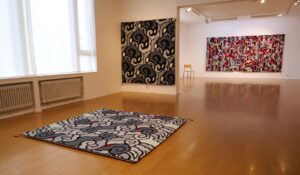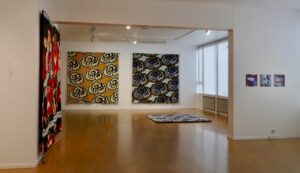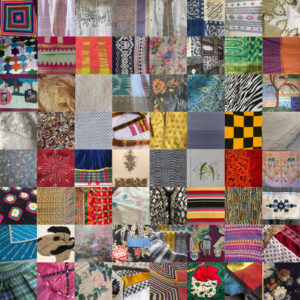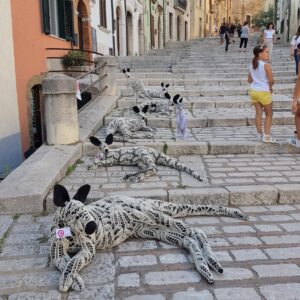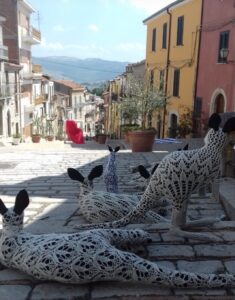August 14, 2020
In
Art, Textile Art
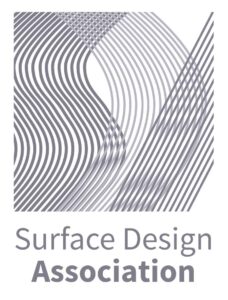
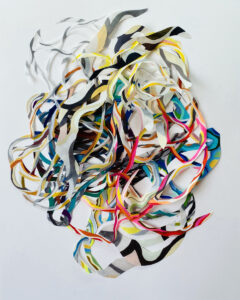
Above: Surface Design Association logo and SDA member Holly Wong, Bia II, 2020
Being a Textile / Fiber Artist isn’t always easy. You often have to battle the misconception that Textile Art isn’t Fine Art, and especially after Covid there aren’t always a huge amount of spaces to exhibit. That is why I’m always keen to feature organisations that help textile artists. One particular organisation I discovered is the SDA or the Surface Design Association. Although it is based in the United States it is open to all textile artists and I recently interviewed the Executive Director, Karena Bennet to find out more.
What is the SDA?
SDA is an international organisation founded in 1977 to promote textile art through publications, exhibitions, workshops, and conferences. The SDA community is truly expansive. We have thousands of members from 40 countries around the world. Our goal is to provide a platform for the exchange of ideas, opportunities for learning and collaboration, and to encourage critical dialogue. At the heart of SDA is our quarterly publication, Surface Design Journal, which is international in scope and brings an array of concepts, processes, and materials to readers.
What are the advantages for textile / fiber artists that join?
Membership includes a range of benefits and we’re always finding new ways to strengthen these offerings. We work really hard to support our members by:
- Providing opportunities for learning and meaningful collaboration
- Mentoring emerging and established artists
- Informing members about the latest developments in the field of fiber arts
- Recognising the accomplishments of members
- Encouraging critical dialogue about fiber art
- Inspiring new directions in fiber and textiles
- Raising the visibility of fibers and textile media in the contemporary art world.
Do you cover all genres of fiber / textile art?
Yes! SDA’s goal is to showcases the breadth and depth of contemporary artists and designers working with or inspired by fiber art and/or textile-based materials, methods, and techniques. Many of our members and contributors work in 2D and 3D, but we’re also interested in time-based media, performance, or conceptual work.
Who can apply? Do they have to live in North America?
We welcome members from all over the world. Currently, we have members in 40 countries. All of our member benefits are open to international members including grants and awards. We’ve also designed certain opportunities to eliminate barriers to participation for members outside of the U.S. For example, our International Exhibition in Print is the focus of one Journal each year. It’s a wonderful opportunity for artists to showcase their work without incurring massive shipping expenses or limiting who can see it. The Journal almost always has some international articles. In December, with the support of Creative New Zealand, we’ll be publishing a Journal that is fully focused on New Zealand and will highlight SDA members there as well as other exciting artists, scholars and organisations working in fiber.
What is a premium member?
Our Premium Membership is designed to give artists opportunities for more exposure. At the premium level, folks are able to upload 10 images to our Member Directory (as opposed to 3 for other member levels). All premium member work also appears in our Premium Gallery, which is a fun way to explore the work SDA artists. We draw from our premium membership for our Online Exhibitions and Member Spotlights that appear on our blog and social media.
Is there anything you would like to add?
While we are a membership-based organisation, we think the wider SDA community in much broader terms. There are great opportunities and a lot to explore for non-members as well. We’re always looking for opportunities for partnerships, collaboration, and to connect with new artists. We are really a community that embraces a diversity of ideas, techniques and media!
www.surfacedesign.org
